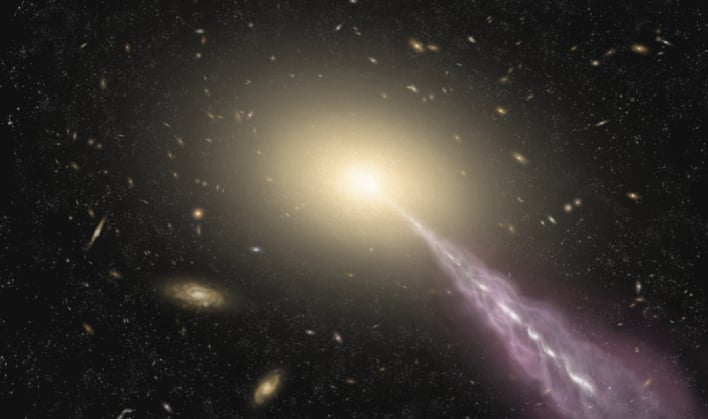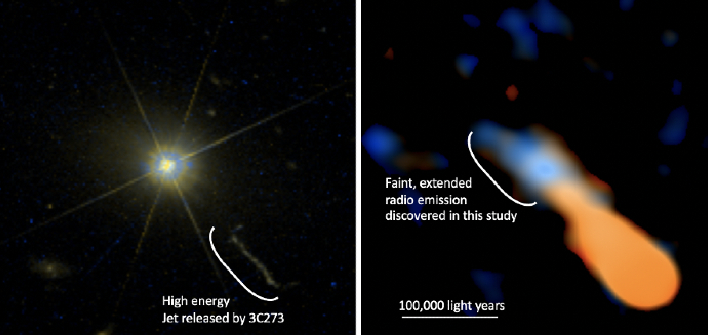Astronomers Unlock The Secrets Of A Mysterious Structure Billions Of Light Years Away

A quasar is believed to be the nucleus of a galaxy, which includes a massive black hole at its center that devours its surrounding material. Quasar 3C273 is located about 2.4 billion light years from Earth. This quasar was the first ever discovered, and has been studied more than any other. Due to its brightness, it is often observed through a telescope because it can be used as a standard position in the sky, much like a radio lighthouse.
3C273 has been known for quite some time as the most famous quasar, with most of the focus given to its bright nuclei where most of the radio waves originate from. There has been far less focus given to its host galaxy, due to the fact that the combination of the faint and diffuse required such a high dynamic range to detect.
The Japanese research team used a technique called self-calibration in order to reduce the leakage of radio waves from 3C273 to the galaxy, which in turn used 3C273 itself to correct for the effects Earth's atmospheric fluctuations had on the telescope system. The team was able to achieve an imaging dynamic range of 85000, a record for extragalactic objects detected by ALMA.

The discovery is important because it has been a mystery in galactic astronomy as to whether the energy from a quasar nucleus can be strong enough to keep the galaxy from being able to form stars. The discovery of the faint radio emissions could help solve that dilemma. Hydrogen gas is essential in creating stars, but if such an intense light shines on it that the gas is ionized, then no stars can be formed. The problem in the past while studying the process was the use of optical light. Optical light is the cosmic dust that absorbs the light along the way to the telescope, so it is difficult to know exactly how much light the gas emits.
"This discovery provides a new avenue to studying problems previously tackled using observations by optical light," stated Shinya Komugi, an associate professor at Kogakuin University and lead author of the study published in the Astrophysical Journal. "By applying the same technique to other quasars, we expect to understand how a galaxy evolves through its interaction with the central nucleus."
Top Image Credit: ALMA

